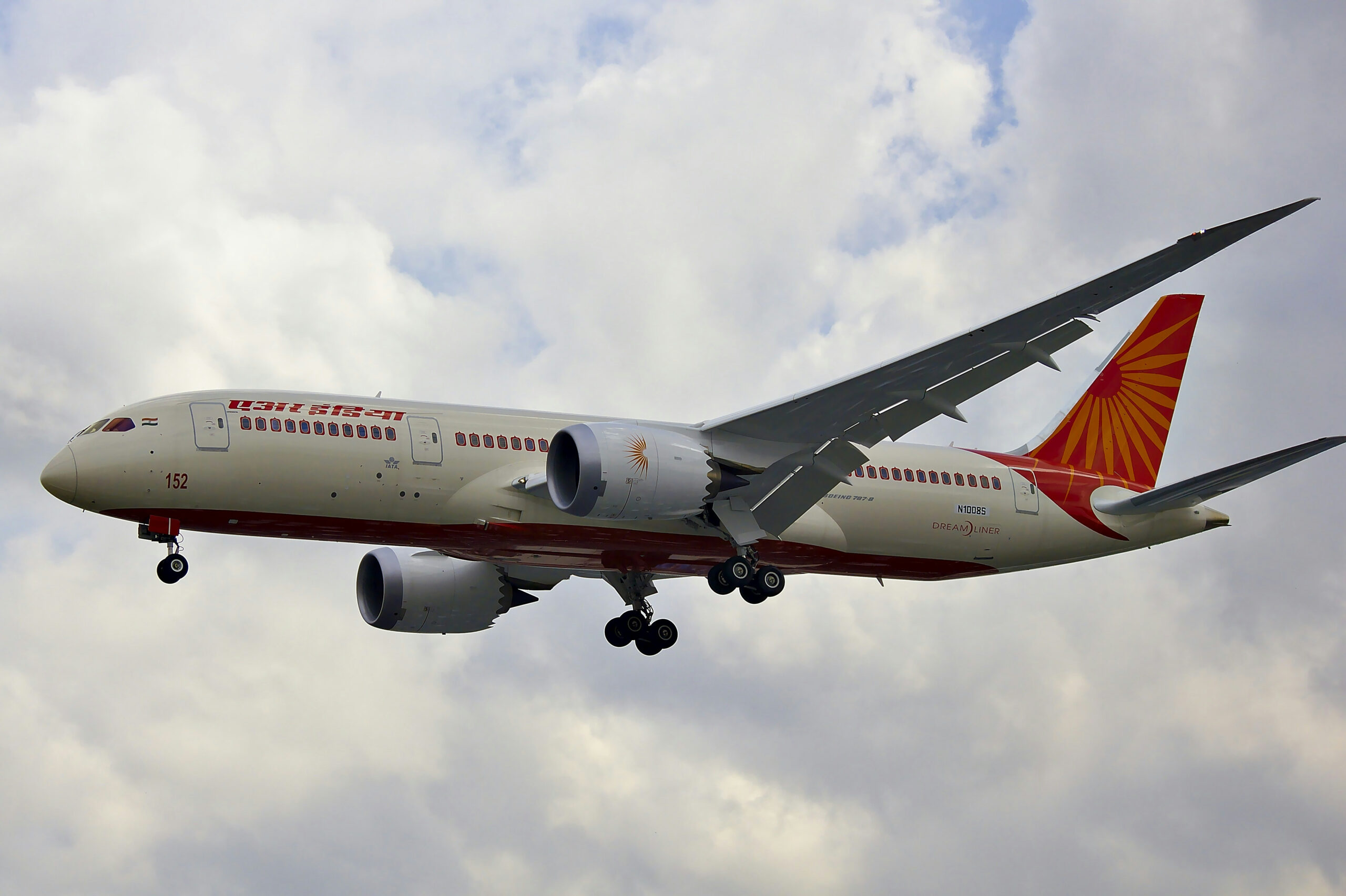Overview
• Operator: Air India
• Aircraft Model: Boeing 777-300
• Registration: VT-ALQ
• Flight Number: AI-126
• Route: Chicago O’Hare (ORD) → Delhi (DEL)
• Date: 5 March 2025
• Occupants: Undisclosed (standard long-haul commercial flight)
• Casualties: None
• Aircraft Status: Grounded in Chicago for maintenance
• Investigation: Routine maintenance inspection by Air India
⸻
Incident Summary
Air India flight AI-126, a Boeing 777-300, was operating a scheduled long-haul service from Chicago to Delhi when multiple lavatories began to fail mid-flight. The situation deteriorated until only one business class toilet remained operational for the entire aircraft.
With hundreds of passengers on board and nearly 14 hours remaining in the flight, the crew elected to turn back rather than continue with an inoperable lavatory system. The aircraft returned to Chicago and landed safely 9 hours and 50 minutes after departure.
⸻
Sequence of Events
In-Flight System Failure
• Aircraft departed Chicago on schedule, cruising at FL330 over the Atlantic.
• Approx. 180 nautical miles south of Kulusuk, Greenland, the crew began receiving reports of toilet failures throughout the aircraft.
• Passengers reported flushing mechanisms not working, leading to overflow and unsanitary conditions.
Decision to Return
• With only one functioning lavatory remaining, the crew determined it was not feasible to continue the 14-hour flight to Delhi.
• The aircraft turned back over the Atlantic, returning to Chicago O’Hare.
• Landed safely after 9 hours and 50 minutes in the air.
⸻
Investigation Findings & Initial Analysis
1. Lavatory System Malfunction
• Boeing 777s use vacuum toilet systems, which rely on suction lines to flush waste.
• Failures could indicate a blockage, sensor issue, or pressure system failure.
• The progressive failure suggests a system-wide fault rather than individual toilet issues.
2. Hygiene & Passenger Comfort Risks
• With only one operational toilet for the entire aircraft, passenger health and safety became a concern.
• Regulations do not require a specific number of lavatories per passenger, but sanitation concerns and passenger discomfort justified the return.
3. Extended Grounding in Chicago
• The aircraft remains grounded for over 39 hours, suggesting:
• A complex issue requiring system-wide repairs.
• Potential pipe blockages or vacuum pressure failure that may need deep inspection.
⸻
Potential Causes & Contributing Factors
1. Vacuum Pipe Blockage
• A foreign object (e.g., excessive paper, improper waste disposal) may have blocked the system, causing a chain reaction failure.
2. Sensor or Pressure System Failure
• The vacuum pumps rely on pressure differentials, and a pressure sensor failure could have disrupted the entire flushing system.
3. Electrical or Software Malfunction
• The lavatories are electronically controlled—a software glitch or electrical fault could have shut down multiple units simultaneously.
⸻
Safety Recommendations & Future Prevention
1. Enhanced Maintenance Checks on Lavatory Systems
• Conduct pre-flight inspections of vacuum pressure levels and system diagnostics before long-haul departures.
2. Passenger Education on Lavatory Use
• Reinforce cabin announcements and signage warning against disposing of non-flushable items (paper towels, diapers, wipes).
3. Crew Training for Progressive Lavatory Failures
• Introduce clear protocols for diagnosing and mitigating in-flight lavatory malfunctions.
• Consider re-routing options before failures escalate to emergency return scenarios.
⸻
Conclusion
While not a safety-critical emergency, this rare lavatory failure forced a major operational decision, leading to an extended transatlantic diversion back to Chicago.
With passenger hygiene and onboard conditions deteriorating, the crew made the right decision to return rather than continue a long-haul flight with only one functioning toilet.
The cause of the failure remains under investigation, but system-wide blockage or vacuum pressure failure is the most likely culprit.
The aircraft remains grounded in Chicago, awaiting full maintenance diagnostics and repairs.
⸻
Disclaimer
“This report is based on available information as of 7 March 2025. While every effort has been made to ensure accuracy, the completeness of the details cannot be guaranteed. If you are the rightful owner of any referenced materials and wish them removed, please email takedown@cockpitking.com.”
